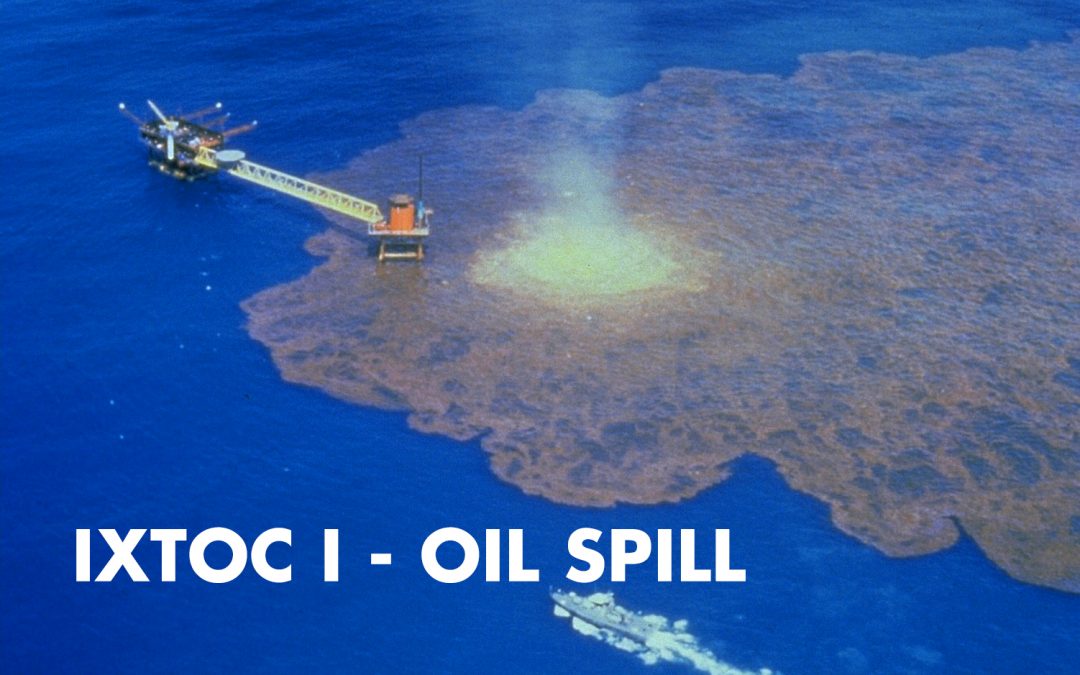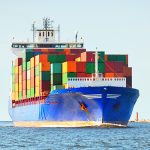The next one on our list of major oil spills in the history of maritime is Ixtoc I oil spill explosion. Following the coverage of the BP Deepwater Horizon blowout and oil spill in the Gulf describes the disaster as unprecedented when, in fact, it is not. Thirty-one years ago June 3, 1979, At the Bay of Campeche, Ixtoc I exploratory well suffered a blowout resulting in the largest peacetime oil spill in history and it killed 21 workers. The oil and gas fumes exploded in contact with the operating pump motors started a fire which led to the collapse of the Sedco 135 drilling tower. The collapse caused damage to underlying well structures. The damage to the well structures led to the release of significant quantities of oil into the Gulf. The PEMEX, an Oil Company owned by Mexico state, operated the Ixtoc-1 well blew out after workers on board removed the pipe from the well to change the drillbit. During this process, oil and gas under the pressure of the weight of the drilling mud resulted in the blowout of the well; the blowout preventer was activated but it wasn’t strong enough. Some 3.3 million barrels (138,600,000 gallons) of oil spewed into the Gulf of Mexico over a period of almost 11 months until the well was finally capped on March 23, 1980. The Ixtoc exploratory well blowout occurred in 160 feet of water.
This explosion lasted longer than estimated. The oil spill stopped on 23 March 1980, after 295 days the oil spurt had been reduced first from 4,200 – 4,300 tonnes/day to 1,400 – 1,500 tonnes/day, thanks to the digging of freeing pipes which lowered pressure in the implicated well. The wide amount of dispersants, the settlement of containment booms, and the mobilization of all PEMEX’s recovery means were proved to be insufficient when faced with such a spill. Oil slicks reached the coast around Vera Cruz, Tampico, Campeche, Laguna Madre, and even as far as Texas. The United States was given 2 months to prepare for the oil slick from the Bay of Campeche and planned to protect the Texas coast. Oil from the Ixtoc I reached American waters on August 6, 1979. The beaches and ecosystem of the Texas coast were harmed at that time not only by the Ixtoc I leak but also by the sinking of the Burmah Agate oil tanker on November 6, 1979.
It took 4 months for the Mexican Government to organize a group to analyze the damage done by the spill. Even then the lack of knowledge of the conditions pre-spill made it difficult to quantify the damage done. The Mexican government eventually found that the oil spill killed many species of shrimp and polluted sandy beaches, mangroves, coastal lagoons, and rivers. Shrimp nurseries, mangroves, beaches, and seabirds were oiled. Fishing and tourist activities were affected.
The oil polluted the majority of the offshore region of the Gulf of Mexico, coastal beaches, and the Texas coastal. Further, during the attempts to seal the well, high pressure caused mud to flow up the drill pipe onto the platform and it caught fire. When the well was finally capped on 23 March 1980, approximately 475,000 tons of oil had been already lost. The Campeche Bay shrimp ecosystem, an important good for export, was severely affected by the oil pollution. A shrimp harvesting ground of 15,000 square kilometers was poisoned. To save the thousands of rare species like baby turtles were airlifted to clean up the portion by the U.S. government. PEMEX spent 100 million to clean up the spill.
This especially damaged the larvae and juvenile shrimp, which are highly sensitive to oil contamination. There was a lot of concern about the damage the oil might have caused to the ecology of the shallow coastal lagoons, however, a very small amount of oil reached the lagoons. A flow that was increased by the unusually heavy rains during the winter prevented the oil to reach further. It is clear that the oil had a drastic impact on the littoral crab and on the molluscs fauna of the beaches which were contaminated. The populations of crabs- the ghost crab is also known as Ocypode quadrata were almost eliminated over a wide area. The crab populations on coral islands along the coast were also reduced to a few percent in nine months after the spill. The abundant beach clams as well as other molluscs of the sand beaches did not exhibit any drastic mortality following the spill. In several places in the Veracruz area, such as on the coral island Isla Verde, dense mats of green algae were observed covering hard substrates such as corals and rock formations about 10 months after the blow-out.
Back in 1979, Pemex tried several methods to contain the oil that was similar to the procedures used by BP. The fire and collapse of the Ixtoc rig are eerily similar to what happened at Deepwater Horizon. In both cases, the blowout preventer failed to function.
The recovery operations started in the late part of June. A number of reports meant that only 4-5 percent of the oil was actually recovered. One of the major problems was the weather. Due to the wave heights higher than 3 to 4 meters, the equipment to remove oil was not operable at all. Another major problem was that it was not considered feasible to operate the system at night. The third limitation was the difficulty of rearranging the barges and booms. And finally, the oil-collecting equipment broke down of the weather. On June 9, dispersant spraying commenced using specialized fixed-wing aircraft on a large scale. The dispersants were initially sprayed in a zone 10 to 25 miles off the coast, during the fall, dispersants were also sprayed close to the beaches, near the mouths of the Lagunas, and around the well site. The exact quantity of dispersant used in the clean-up is unknown. However, according to information received by PEMEX, at least 9000 metric tons were used. This means that the use of dispersant during the Ixtoc I blow-out was one of the largest in history.
After the oil spill, the air smelled of oil, gas, and other pollutants. People experienced breathing issues and skin lesions and yet neither the government nor the oil companies monitored the human impacts of oil pollution.
The effects of oil spills include distortion of the ecology, gross biological harm, physiological impacts on both plants and animals, ecological changes. Oil spills along with their cleaning and containing procedures can mentally and physically affect workers which can be short-term or long-term. Short-term health effects are most obvious among the thousands of workers containing and dispersing the spill. Workers who handle and transport the dispersants are most likely to be exposed and suffer from adverse health effects. Some workers are more sensitive to chemicals, and contact with the skin may result in disorders such as skin reddening, swelling, and burning, follicular rashes, defatting or drying of the skin, infections, dermatitis, folliculitis, eye irritation, other allergic reaction. These adverse health effects can also worsen with sun exposure. It is still considered as one of the most horrifying spills in the history of maritime resulting in the destruction of many species and taking the lives of hundreds.
To be continued…






